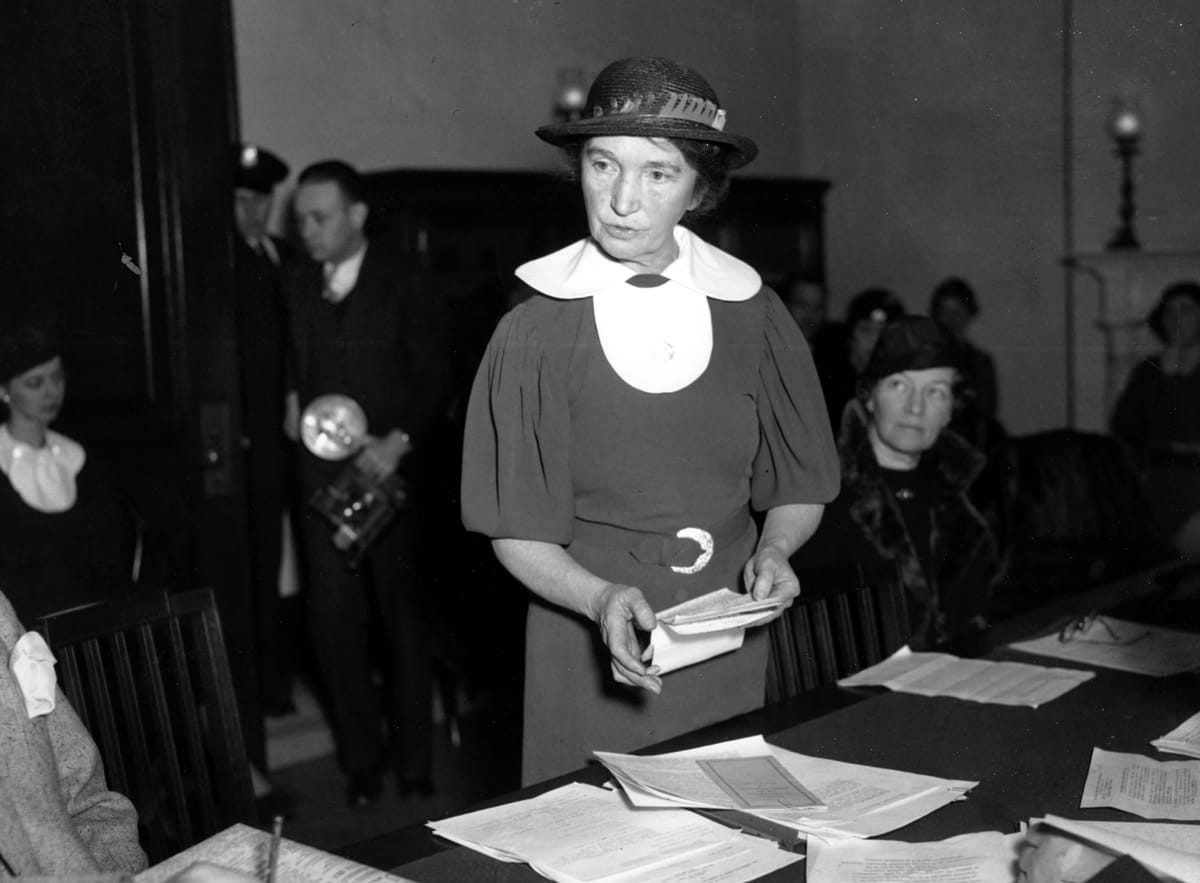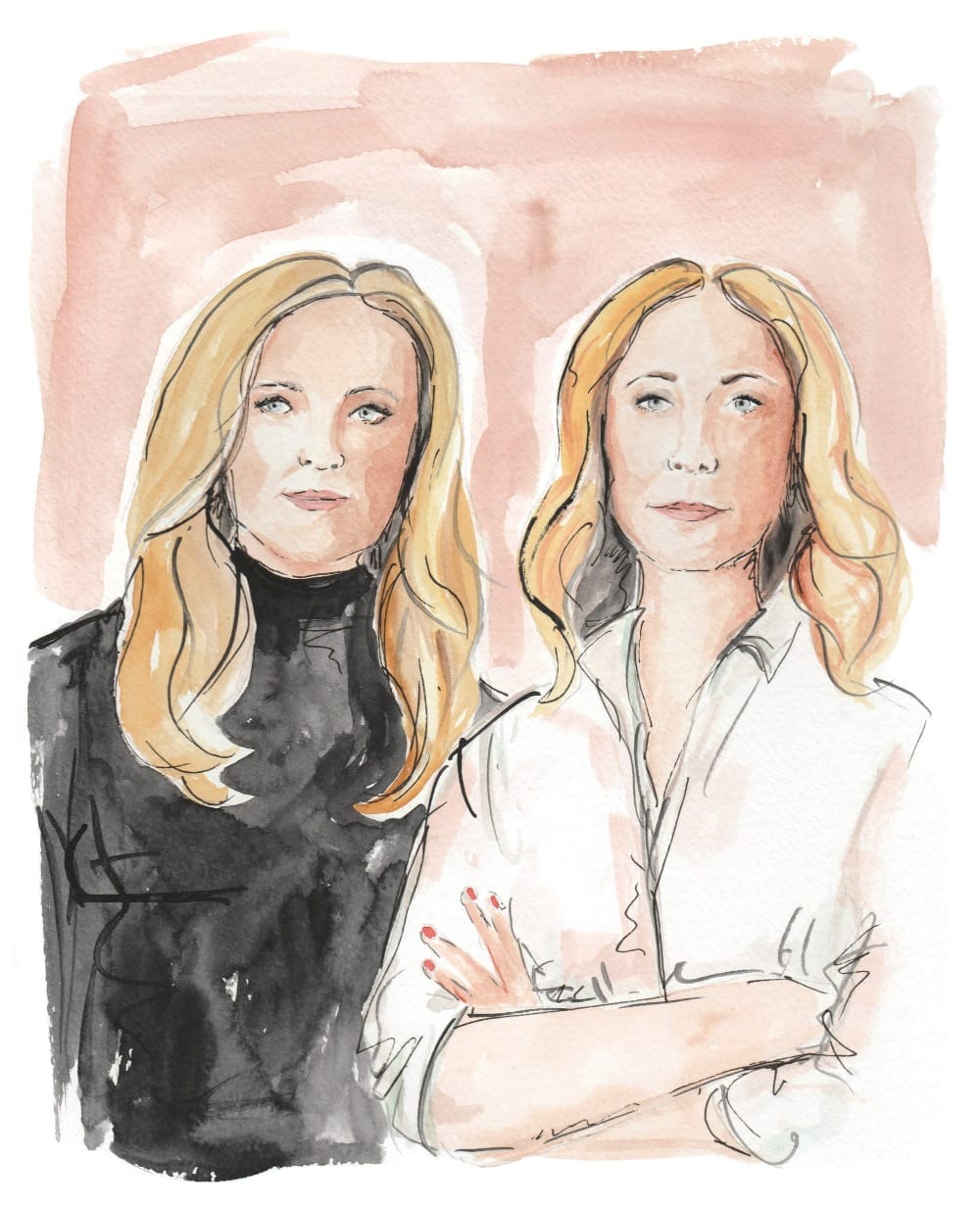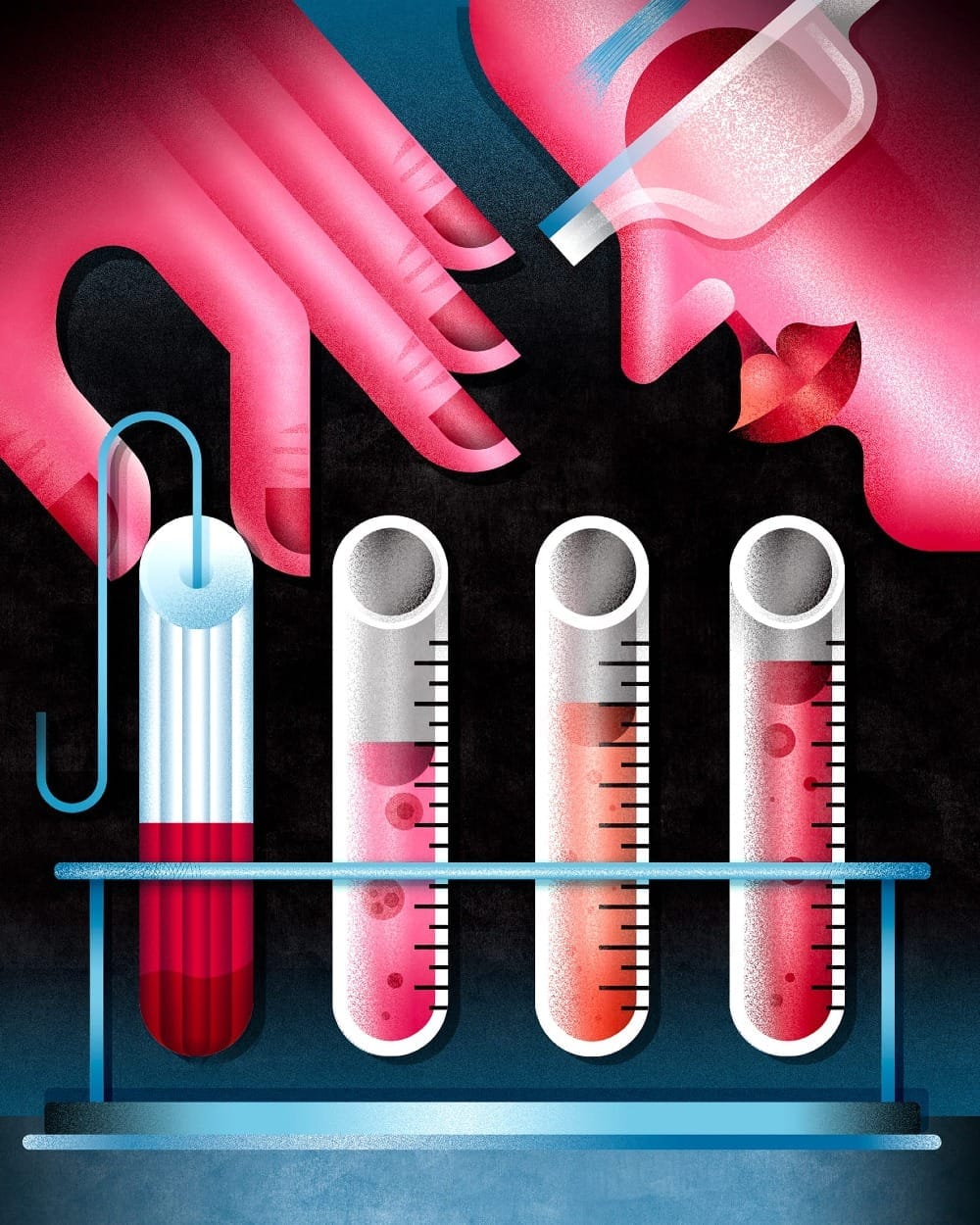The Popularity of the Pill Is Plummeting—at the Exact Moment It Shouldn’t Be
Birth control gave women control over their bodies, their careers and their futures. A cultural campaign against the pill risks rolling all this back.

In April 2021, as rumors swirled on social media about the supposed risks of the Covid vaccine, a doctor appeared on British breakfast television in an attempt to dispel the myths.
Anthony Harnden, the deputy chair of Britain’s Joint Committee on Vaccination and Immunisation, was frank. Yes, he admitted, AstraZeneca’s version of the vaccine had been shown to put a person’s chances of getting a blood clot at about one in 250,000. But the risk was far lower than the chances of getting a blood clot while taking the oral contraceptive pill which, with a risk of at most 12 per 10,000 people, is over 125 times higher.
Harnden’s point was that women take the pill—a medication so ubiquitous it has achieved one-word, or, well, two-word status—every day for years without worrying about their blood clot risk.
Unfortunately, instead of calming the Covid anti-vaxxers, his words had the inverse effect of creating panic online about…the pill itself.
As I reported at the time, it was another episode in the pill’s ongoing PR crisis. A study published in the British Medical Journal (BMJ) in January 2025 showed that, between 2018 and 2023, the percentage of women using hormonal contraception had fallen from 18.8% to 11.3%. The trend is similar in the U.S., where the National Survey of Family Growth shows the percentage of women using the pill fell from 31% in 2002 to just 24% in 2017-2019.
At the same time, influencers on social media—usually “wellness”-focused—began advising women to give up the pill in favor of apps that supported the use of the rhythm method.
This comes as reproductive rights are being systematically rolled back in the U.S. since the fall of Roe vs Wade; as U.K. police have been given broader powers to examine the contents of women’s cellphones for evidence they might have carried out an illegal abortion; as governments around the world are increasingly looking to exert control over women’s bodies and raise birth rates.
A broad rejection of a key form of contraception which gives women maximal control over when and how they get pregnant is a serious blow for women’s reproductive rights.
A ‘Magic Pill’
The oral contraception pill was first approved for birth control purposes by the U.S. Food and Drug Administration (FDA) in 1960—eight years before the summer of love. A year later, 1961, it was made available to married women in the U.K.
The synthetic blend of progesterone and estrogen had been developed by the scientists Gregory Pincus, Min Chueh Chang and John Rock using a grant from Katharine McCormick. McCormick, the heir to the International Harvester fortune, had worked with Margaret Sanger to make Sanger’s dream—a “magic pill” that would prevent pregnancy—a reality.
By 1962, over a million women in the U.S. were taking oral contraceptives. By the 1990s, over 50 million women had used the pill. In 2019, figures from the UN showed 151 million women globally were on the pill, making it the fourth-most used method of contraception, after female sterilization, condoms and the intrauterine device (IUD).
The pill didn’t just give a woman control over her body—it gave her control over her future. Analysis by Claudia Goldin, the Nobel Prize-winning economist, and Lawrence Katz has suggested that the launch of the pill had a direct effect on the number of women joining professions like medicine and the law, because “the pill enabled women to invest in expensive, long-duration training and not pay as high a price.” That immediately increased women’s participation in advance-track courses of study like medicine and the law. “Women were 10% of first year law students in 1970, but were 36% in 1980.”

The Backlash Begins
The backlash started in the 1970s, when reports suggested that smoking and taking the pill could increase women’s chances of getting a blood clot. In the 1980s, studies linked the pill with breast cancer, heart attacks and stroke.
In the 1990s, studies confirmed the link with breast cancer; although the amounts of hormones in the pill have since been reduced, cutting that risk. The pill of the 1990s was “very different than the current pill that we have available,” says Dr. Jayme Trevino, a complex family planning specialist and a Darney-Landy Fellow position at the American College of Obstetricians and Gynecologists.
A political backlash peaked later. Although hormonal birth control had always been politicized (in 1968 Pope Paul VI finally ended speculation over the Vatican’s stance on the pill by condemning it as sinful), criticism of it from the Christian right increased during the first Obama administration, particularly after the Affordable Care Act (ACA) was passed in 2010, expanding access to the medication to 63 million women by requiring employers to provide contraceptive coverage. Anti-abortion groups referred to the legislation as a “back door abortion mandate” and called birth control pills “life-ending drugs that have been deceptively labeled as contraception.”
As a result of a court case brought by Hobby Lobby, in 2014 the Supreme Court ruled certain business owners could refuse to buy insurance coverage that included contraception for their employees.
And now, influencers have gotten involved. In the current “propaganda I’m not falling for” trend, influencers are listing “birth control” alongside “tap water” as things they feel they are being deceived over (it’s not clear who is doing the deceiving).
This is prolific. A study of 50 YouTube videos posted by influencers with between 20,000 and 2 million subscribers found that 74% were talking about discontinuing birth control, with 44% saying they were doing it to be “more natural.” In April 2025, TikTok deleted almost 1,500 videos, 115 of which were tagged #birthcontrol, for misinformation around the subject—but not before the videos had been shared 21,000 times, reaching 15 million viewers.

‘Some People Feel Mistrustful’
Where’s this mistrust coming from? One explanation might be that women’s concerns over the pill haven’t always been taken as seriously by health professionals as they could have been, and that’s coming back to bite us.
“There are nuanced conversations to be had around the pill, but unfortunately there often isn't the time in appointments to discuss it,” says Dr. Melanie Davis-Hall, a medical director at The Lowdown, a site which allows women to review their form of contraception, and one of the authors of its book, Contraception. “That’s why… some people feel mistrustful. We do need that information up-front and the chance to ask those questions and have [the risks] explained.”
And the fact remains that there are risks to the pill: It does increase the chances of breast cancer and blood clots (though the risks of blood clots when you are pregnant are 25 times higher than the pill). Acne and mood swings are very real side effects, though weight gain is not.
But the pill also has health benefits: One study found that although 6.3% of breast cancers were attributable to the use of oral contraceptives, hormonal birth control had also “potentially prevented about 57.3% of endometrial cancers.”
And, crucially, it is also 99% effective at preventing pregnancy—which of course, is the point.
When Misinformation Thrives
When women’s concerns are shut down by health professionals without a proper conversation, it creates the kind of knowledge gap where misinformation thrives.
This knowledge gap has been seized on by anti-abortion and anti-contraception activists and has a distinctly MAHA (Make America Healthy Again) vibe.
While pill use has declined, so the number of women using the so-called “fertility awareness” method has grown. That’s an amped-up version of what used to be known as the rhythm method, and it has risen, from 0.4% of women in 2018 to 2.5% in 2023. Under this method, women use apps to track their cycles using biomarkers like the consistency of their cervical mucus and their basal body temperature (their temperature at rest) to determine when they will ovulate, then avoid sex during the days around ovulation.
This, without wishing to sound too conspiratorial, is exactly what a certain brand of conservative wants: Project 2025, for example, the 925-page framework for a second Trump presidency written by the right-wing think tank The Heritage Foundation, mentions “fertility awareness” no fewer than eight times.
Among those mentions are the arguments that the Centers for Disease Control should should “update its public messaging about the unsurpassed effectiveness of modern fertility awareness–based methods (FABMs) of family planning,” while Health and Human Services “should more thoroughly ensure that fertility awareness–based methods of family planning are part of women’s preventive services.”
Jessica Valenti, the journalist behind the Abortion Everyday newsletter, notes it’s a multi-pronged effort, years in the making.
“There’s no one law, no singular campaign that will do away with birth control all at once—and that’s what makes conservatives’ plan so incredibly dangerous,” she wrote in 2023. “The slow and sly erosion of a longstanding right is much harder to spot than a single sweeping law. Either way, though, the result is the same: Death by a thousand cuts still kills you in the end.”

An Imperfect Medication
The PR problem faced by the pill’s proponents is that it is an imperfect medication. Its users report side effects they find unpleasant. (Then again, that makes the pill no different from countless other medications.) And pharmaceutical companies seem reluctant to further improve a medication that’s more or less good enough: Between 2017 and 2020, there were just 20-25 industry-funded clinical trials, compared with 600 for cardiovascular drugs in just one of those years. An oft-cited statistic indicates that while pharma companies tend to put 20% of revenues for most drugs back into research and development, for contraception the figure is just 2%.
It’s interesting that the decline in use of the pill—and the trend for women in favor of “natural” methods of contraception—has coincided with an increase in the popularity of hormone replacement therapy among older women. Dr Janet Barter, president of the U.K.’s Faculty of Sexual & Reproductive Healthcare, suggests it’s a generational thing. A more sinister read might suggest that encouraging women to use a “natural” method of contraception that may only be 76% effective may have its uses as fertility rates decline
And that’s exactly why now might be the moment to remind ourselves that when the pill was first introduced, it gave women their own type of control: control over their own bodies—and by dint of that, over their own futures. At a time when everything feels quite out of control, this at least feels reassuring.














